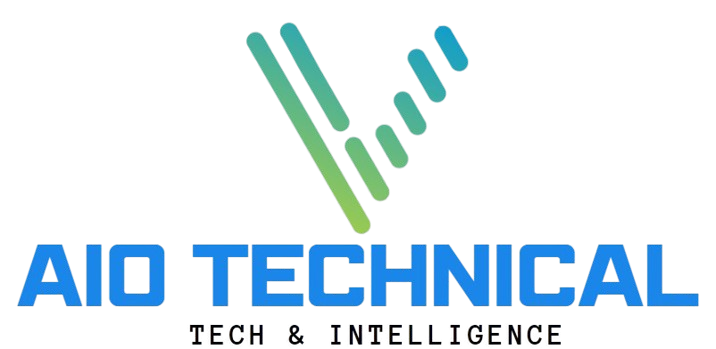Optimise, Analyse, and Save : Key Strategies for Business Growth

In the competitive business landscape, companies need to continually look for ways to Optimise, analyse, and save to stay ahead. Whether you’re running a small start-up or a large corporation, the ability to efficiently manage resources, make informed decisions based on data, and cut down on unnecessary costs can significantly impact your bottom line. In this article, we’ll explore how businesses can implement strategies to optimise operations, analyse data effectively, and save both time and money. This guide is brought to you by V Aiotechnical.com, your trusted resource for practical business insights.
Optimise : Streamlining Operations for Maximum Efficiency
Optimisation is the process of making the best use of resources to achieve maximum output with minimal waste. It is an ongoing strategy that every business must adopt to remain competitive and efficient. Below are key methods to optimise business operations:
1. Automate Repetitive Tasks
One of the most effective ways to optimise business operations is through automation. By using software and tools that automate repetitive tasks, businesses can free up employees’ time, reduce human error, and speed up processes.
For example, automating customer service with chatbots, scheduling software for meetings, or using automated email marketing systems can drastically reduce the manual effort required to perform these tasks. This allows employees to focus on higher-value tasks, such as strategy and creative work.
2. Resource Allocation and Time Management
Proper resource allocation is essential for optimising any business. Knowing where to allocate your time, talent, and money can make a significant difference in your company’s success. Tools such as project management software (e.g., Asana, Trello, or Monday.com) help ensure that tasks are assigned to the right team members and completed efficiently.
In addition, tracking time spent on various tasks with time management tools can help identify areas where time is being wasted. By analysing this data, businesses can optimise workflows and ensure that key tasks are prioritised.
3. Lean Management Principles
Implementing lean management principles is another way to optimise operations. Lean management focuses on reducing waste while maximising value. This can include reducing excess inventory, minimising overproduction, and cutting down on unnecessary steps in a process.
By constantly reviewing processes, gathering employee feedback, and making incremental improvements, businesses can optimise operations, improve efficiency, and create a culture of continuous improvement.
Analyse: Making Data-Driven Decisions
In the modern business environment, data is a powerful asset. Being able to analyse data effectively allows businesses to make informed decisions, uncover opportunities, and predict future trends. Here’s how businesses can leverage data analysis to drive success:
1. Data Collection and Integration
To effectively analyse your business performance, you first need to collect the right data. This includes customer data, sales figures, website analytics, and social media interactions. Using data integration platforms like Google Analytics, Microsoft Power BI, or Tableau, businesses can pull together information from various sources to get a unified view of their performance.
For example, by integrating sales and customer feedback data, a business can analyse patterns in customer purchasing behavior, helping them tailor marketing strategies and improve product offerings.
2. Key Performance Indicators (KPIs)
To make sure you’re measuring the right data, it’s important to identify the Key Performance Indicators (KPIs) that align with your business goals. KPIs can vary by industry but often include metrics such as:
- Revenue growth
- Customer acquisition cost
- Customer lifetime value
- Conversion rate
By tracking these KPIs and comparing them over time, businesses can analyse their progress and make adjustments as needed to stay on course.
3. Predictive Analytics for Future Planning
Predictive analytics is a valuable tool that uses historical data and machine learning to forecast future trends. By analysing data from past sales, marketing campaigns, or customer behavior, predictive models can help businesses anticipate demand, plan inventory, and optimize pricing strategies.
For example, a retail business might use predictive analytics to forecast holiday shopping trends and adjust their inventory levels accordingly, ensuring that they don’t run out of stock or overstock on slow-moving products.
4. Customer Segmentation and Personalisation
Another critical way to analyse data is through customer segmentation. By dividing your customer base into distinct groups based on demographics, buying behavior, or preferences, you can target each group more effectively with personalised marketing campaigns.
For example, an e-commerce company might use data to identify frequent buyers or high-value customers and offer them special discounts, loyalty rewards, or exclusive promotions to increase customer retention.
Save: Cutting Costs and Improving Profit Margins
One of the primary goals for any business is to save money while maintaining quality and efficiency. By optimising processes and analysing data, businesses can identify opportunities to cut unnecessary costs. Below are some strategies to help businesses save:
1. Optimising Energy and Resource Usage
Energy costs can quickly add up, especially for businesses with large facilities or high energy demands. By adopting energy-efficient practices—such as upgrading to LED lighting, using energy-efficient equipment, or adopting renewable energy sources—businesses can save on utility bills while contributing to sustainability efforts.
Similarly, tracking resource usage (such as raw materials or office supplies) and optimising supply chains can help businesses minimise waste and reduce expenses.
2. Outsourcing Non-Core Activities
Outsourcing non-core activities can be a cost-effective way to save money. For example, many businesses choose to outsource accounting, IT support, or customer service functions to third-party providers, rather than maintaining in-house teams.
By outsourcing these tasks, businesses can reduce payroll costs, save on training expenses, and focus their internal resources on activities that directly contribute to growth and profitability.
3. Negotiating with Suppliers
Another effective way to save money is through supplier negotiations. By building strong relationships with suppliers and regularly reviewing contracts, businesses can negotiate better terms, such as lower prices, discounts for bulk orders, or extended payment terms.
This can be especially beneficial for businesses that rely on raw materials or goods for resale, as cost savings at the supply chain level can significantly improve profit margins.
4. Preventative Maintenance for Equipment
Preventative maintenance is crucial for saving money on equipment and machinery. By implementing regular maintenance schedules, businesses can identify potential issues before they lead to expensive repairs or downtime.
For instance, a manufacturing company might schedule routine inspections for its production equipment to ensure that everything is functioning properly. By catching problems early, the company can avoid costly emergency repairs and extend the lifespan of its machinery.
Conclusion: Achieving Long-Term Business Success with Optimisation, Analysis, and Savings
In today’s competitive business world, the ability to optimise, analyse, and save is crucial for long-term success. By optimising business operations, companies can improve efficiency, reduce waste, and boost productivity. Effective analysis of data provides valuable insights for better decision-making, while cost-saving strategies help maintain healthy profit margins.
To thrive in the modern business environment, companies must continuously refine their processes, embrace data-driven strategies, and seek out opportunities to reduce costs. By leveraging technology, fostering a culture of improvement, and using data to guide decision-making, businesses can ensure sustainable growth and a competitive edge.
This review has been prepared by V Aiotechnical.com, your source for valuable insights on optimising business processes and leveraging data for success. We hope this guide has provided you with practical tools and strategies to enhance your business performance.





